-
 Bitcoin
Bitcoin $83,622.6306
-1.03% -
 Ethereum
Ethereum $1,589.6945
-1.99% -
 Tether USDt
Tether USDt $1.0000
0.01% -
 XRP
XRP $2.0889
-1.88% -
 BNB
BNB $580.0353
-0.85% -
 Solana
Solana $126.7178
-2.33% -
 USDC
USDC $1.0000
-0.01% -
 TRON
TRON $0.2506
-0.43% -
 Dogecoin
Dogecoin $0.1537
-3.31% -
 Cardano
Cardano $0.6091
-4.20% -
 UNUS SED LEO
UNUS SED LEO $9.3201
-0.87% -
 Chainlink
Chainlink $12.2503
-3.06% -
 Avalanche
Avalanche $19.0105
-5.53% -
 Stellar
Stellar $0.2359
-1.88% -
 Toncoin
Toncoin $2.8505
-1.13% -
 Shiba Inu
Shiba Inu $0.0...01170
-2.63% -
 Sui
Sui $2.0950
-4.30% -
 Hedera
Hedera $0.1569
-4.99% -
 Bitcoin Cash
Bitcoin Cash $319.8208
-1.32% -
 Litecoin
Litecoin $75.7238
-2.04% -
 Polkadot
Polkadot $3.5266
-3.99% -
 Dai
Dai $1.0001
0.01% -
 Bitget Token
Bitget Token $4.2562
-1.04% -
 Hyperliquid
Hyperliquid $15.1159
-4.03% -
 Ethena USDe
Ethena USDe $0.9992
0.01% -
 Pi
Pi $0.6455
-12.89% -
 Monero
Monero $215.1633
0.19% -
 Uniswap
Uniswap $5.1866
-3.08% -
 OKB
OKB $51.9360
-0.45% -
 Pepe
Pepe $0.0...06972
-4.89%
What is the difference between staking and mining in DeFi mining?
Staking in DeFi involves locking up cryptocurrency to validate transactions on PoS blockchains, while mining on PoW networks requires solving complex problems with specialized hardware.
Apr 14, 2025 at 08:49 pm
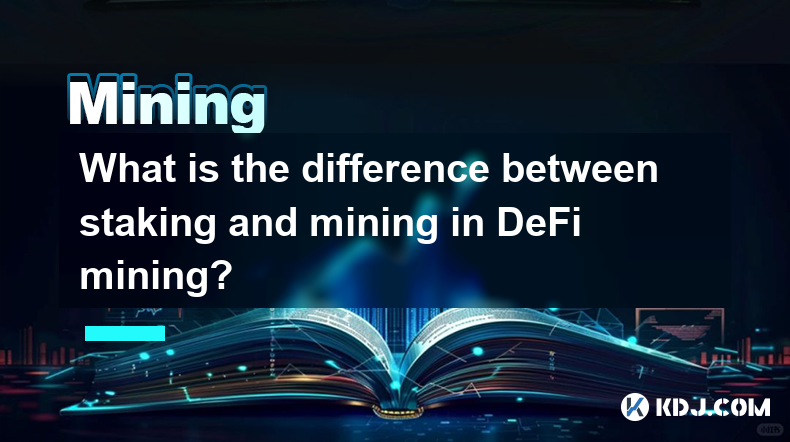
In the world of decentralized finance (DeFi), two prominent methods for earning rewards and participating in the network are staking and mining. While both methods allow users to contribute to the blockchain and earn rewards, they operate on different principles and have unique characteristics. Understanding the differences between staking and mining is crucial for anyone looking to engage in DeFi mining.
What is Staking?
Staking is a process used by certain blockchain networks, particularly those that use a Proof of Stake (PoS) consensus mechanism. In a PoS system, instead of using computational power to validate transactions and create new blocks, participants can stake their cryptocurrency holdings to participate in the validation process.
- How Staking Works: When you stake your cryptocurrency, you essentially lock up a certain amount of your tokens in a wallet or platform. By doing so, you become eligible to be chosen as a validator, who is responsible for verifying transactions and adding them to the blockchain. The likelihood of being chosen as a validator often depends on the amount of cryptocurrency you have staked.
- Rewards in Staking: Stakers are typically rewarded with additional tokens for their participation. The rewards are usually proportional to the amount of cryptocurrency staked and the duration for which it is staked.
- Risks and Considerations: While staking is generally considered less resource-intensive than mining, it does come with its own risks. For instance, staked tokens might be locked up for a period, and there could be penalties for not participating actively in the validation process.
What is Mining?
Mining is a process used by blockchain networks that operate on a Proof of Work (PoW) consensus mechanism. In a PoW system, miners compete to solve complex mathematical problems to validate transactions and add them to the blockchain.
- How Mining Works: Miners use specialized hardware, known as mining rigs, to perform the necessary calculations to solve these problems. The first miner to solve the problem gets to add a new block to the blockchain and is rewarded with newly minted cryptocurrency.
- Rewards in Mining: The rewards in mining come from two sources: the newly minted cryptocurrency (block reward) and transaction fees from the transactions included in the block. The block reward decreases over time as per the blockchain's protocol.
- Risks and Considerations: Mining is highly competitive and requires significant investment in hardware and electricity. The profitability of mining can fluctuate based on the price of the cryptocurrency, the difficulty of the mining problem, and the cost of electricity.
Key Differences Between Staking and Mining
The fundamental differences between staking and mining stem from their underlying consensus mechanisms and operational requirements.
- Consensus Mechanism: Staking is associated with PoS, whereas mining is associated with PoW. PoS is generally considered more energy-efficient and less resource-intensive than PoW.
- Resource Requirements: Staking requires you to hold and lock up cryptocurrency, while mining requires significant computational power and electricity.
- Accessibility: Staking can be more accessible to the average user, as it does not require specialized hardware. Mining, on the other hand, often requires a substantial initial investment in mining equipment.
- Rewards Structure: The rewards in staking are typically more predictable and less volatile than those in mining. Staking rewards are based on the amount staked and the duration, while mining rewards depend on solving the problem first and can be more variable.
How to Stake in DeFi
If you are interested in staking, here is a step-by-step guide on how to get started:
- Choose a Blockchain: Select a blockchain that supports staking, such as Ethereum 2.0, Cardano, or Tezos.
- Select a Staking Platform: There are various platforms and wallets that support staking. Choose one that aligns with your security and usability preferences.
- Set Up Your Wallet: Download and set up the wallet compatible with your chosen platform. Ensure you follow all security protocols, such as enabling two-factor authentication.
- Deposit Your Cryptocurrency: Transfer the required amount of cryptocurrency to your staking wallet. Make sure you have enough to meet the minimum staking requirement.
- Stake Your Tokens: Follow the platform's instructions to stake your tokens. This usually involves selecting the amount to stake and confirming the transaction.
- Monitor and Manage: Keep an eye on your staked tokens and the rewards you are earning. Some platforms allow you to adjust your staking amount or withdraw your tokens after a certain period.
How to Mine in DeFi
If you prefer mining, here is a detailed guide on how to start:
- Choose a Cryptocurrency: Select a cryptocurrency that uses PoW, such as Bitcoin or Ethereum (before its transition to PoS). Research the profitability and the mining difficulty of the chosen cryptocurrency.
- Acquire Mining Hardware: Purchase the necessary mining equipment, such as ASICs for Bitcoin or GPUs for Ethereum. Consider the hash rate and energy efficiency of the hardware.
- Set Up Your Mining Rig: Assemble your mining rig and connect it to a power source. Ensure proper ventilation to prevent overheating.
- Install Mining Software: Download and install mining software compatible with your hardware and chosen cryptocurrency. Configure the software with your mining pool's details if you are joining a pool.
- Join a Mining Pool: To increase your chances of earning rewards, consider joining a mining pool. You will need to create an account and set up your mining rig to work with the pool.
- Start Mining: Begin the mining process by starting your mining software. Monitor your rig's performance and the rewards you are earning.
- Manage Your Earnings: Regularly withdraw your mining rewards to your cryptocurrency wallet. Keep track of your expenses and profitability to ensure mining remains viable.
Security Considerations in Staking and Mining
Both staking and mining come with security risks that participants need to be aware of.
- Staking Security: When staking, it is crucial to choose a reputable and secure platform. Be wary of platforms that promise unusually high rewards, as they might be scams. Always enable two-factor authentication and keep your private keys secure.
- Mining Security: Mining rigs are valuable targets for hackers. Ensure your mining software and operating system are up to date with the latest security patches. Use strong passwords and consider using a separate computer for mining to isolate it from your personal data.
Frequently Asked Questions
Q1: Can you stake and mine the same cryptocurrency?
A1: It depends on the cryptocurrency. Some cryptocurrencies, like Ethereum, have transitioned from PoW to PoS, meaning you can no longer mine them but can stake them. Others, like Bitcoin, remain strictly PoW and cannot be staked. Always check the specific cryptocurrency's protocol to understand its consensus mechanism.
Q2: How do I know if staking or mining is more profitable for me?
A2: Profitability depends on various factors, including the cryptocurrency's price, the cost of electricity, the hardware you use for mining, and the staking rewards offered. Calculate your potential earnings and expenses for both staking and mining to determine which is more profitable for your situation.
Q3: Are there any environmental concerns with mining?
A3: Yes, mining, particularly with PoW cryptocurrencies like Bitcoin, consumes a significant amount of electricity, leading to environmental concerns. PoS-based staking is considered more environmentally friendly due to its lower energy consumption.
Q4: Can I lose my staked tokens if the network is attacked?
A4: In some PoS systems, validators can be penalized (slashed) for malicious behavior or network issues. While losing staked tokens due to an attack is rare, it is essential to understand the slashing conditions of the network you are staking on and take appropriate security measures.
Disclaimer:info@kdj.com
The information provided is not trading advice. kdj.com does not assume any responsibility for any investments made based on the information provided in this article. Cryptocurrencies are highly volatile and it is highly recommended that you invest with caution after thorough research!
If you believe that the content used on this website infringes your copyright, please contact us immediately (info@kdj.com) and we will delete it promptly.
- Public Companies Added Nearly 100,000 Bitcoin To Their Balance Sheets During Q1 2025
- 2025-04-16 07:15:16
- Amidst the Stormy Seas of the Crypto World, a New Titan Emerges—BlockDAG
- 2025-04-16 07:15:16
- Bitcoin (BTC) reclaims $85,000, setting the stage for altcoins to rally
- 2025-04-16 07:15:14
- The Pi Network token price has increased by more than 14% over the past week.
- 2025-04-16 07:15:14
- A wave of capital is flowing out of Ethereum [ETH] and into Tron [TRX]
- 2025-04-16 07:05:14
- Figment to power 3iQ's newly approved Solana exchange-traded fund (ETF)
- 2025-04-16 07:05:14
Related knowledge
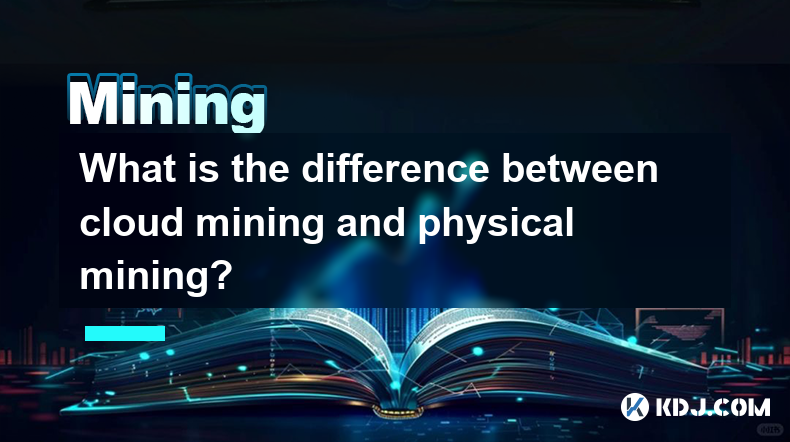
What is the difference between cloud mining and physical mining?
Apr 16,2025 at 01:49am
What is the difference between cloud mining and physical mining? In the world of cryptocurrencies, mining is the process by which new coins are generated and transactions are verified and added to the blockchain. There are two primary methods of mining: cloud mining and physical mining. Understanding the differences between these two approaches can help...
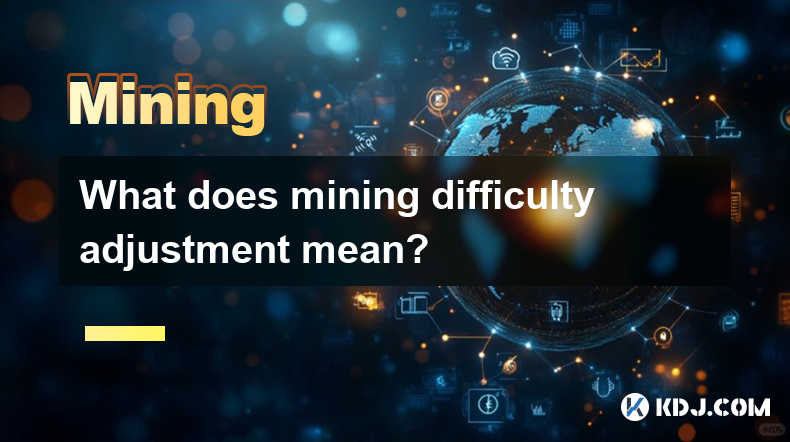
What does mining difficulty adjustment mean?
Apr 16,2025 at 12:42am
What does mining difficulty adjustment mean? Mining difficulty adjustment is a crucial mechanism in blockchain networks, particularly in Proof of Work (PoW) systems like Bitcoin. It ensures that the rate at which new blocks are added to the blockchain remains consistent, despite fluctuations in the total computational power (hash rate) of the network. T...
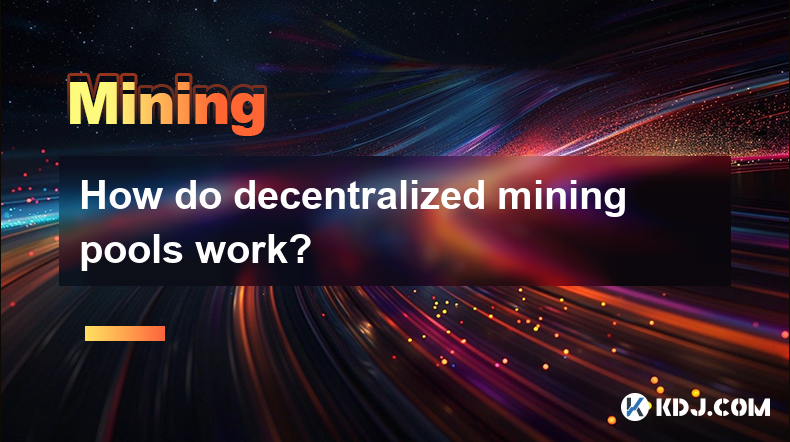
How do decentralized mining pools work?
Apr 16,2025 at 05:42am
Decentralized mining pools represent a significant evolution in the world of cryptocurrency mining, offering a more democratic and transparent approach compared to traditional centralized pools. In this article, we will explore the mechanics of decentralized mining pools, their benefits, and how they operate within the cryptocurrency ecosystem. What are...
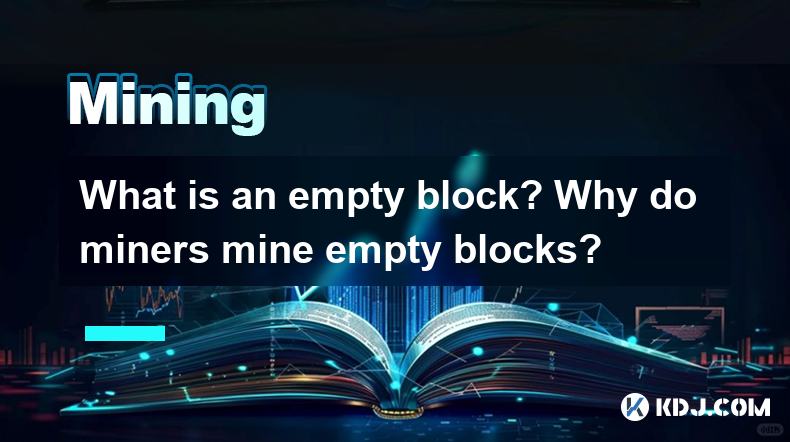
What is an empty block? Why do miners mine empty blocks?
Apr 16,2025 at 01:28am
What is an Empty Block?An empty block in the context of blockchain technology, particularly in cryptocurrencies like Bitcoin, refers to a block that contains no transactions other than the coinbase transaction. The coinbase transaction is a special transaction in which new bitcoins are generated and awarded to the miner who successfully mines the block....

What is the KawPow algorithm?
Apr 16,2025 at 06:43am
The KawPow algorithm is a proof-of-work (PoW) consensus mechanism specifically designed for the Ravencoin blockchain. It evolved from the earlier X16R and X16RV2 algorithms, aiming to enhance the security and efficiency of the mining process. KawPow was introduced to address the issues associated with ASIC (Application-Specific Integrated Circuit) miner...
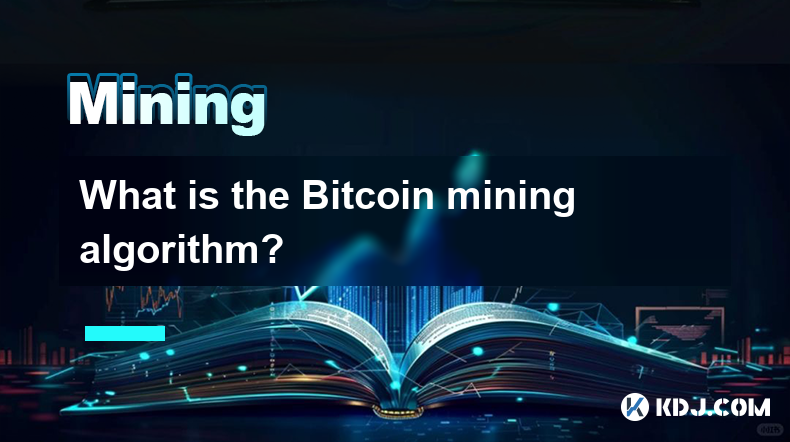
What is the Bitcoin mining algorithm?
Apr 15,2025 at 08:00pm
What is the Bitcoin Mining Algorithm? Bitcoin mining is a crucial process that maintains the integrity and security of the Bitcoin network. At the heart of this process lies the Bitcoin mining algorithm, which is responsible for verifying transactions and adding them to the blockchain. Understanding this algorithm is essential for anyone interested in t...

What is the difference between cloud mining and physical mining?
Apr 16,2025 at 01:49am
What is the difference between cloud mining and physical mining? In the world of cryptocurrencies, mining is the process by which new coins are generated and transactions are verified and added to the blockchain. There are two primary methods of mining: cloud mining and physical mining. Understanding the differences between these two approaches can help...

What does mining difficulty adjustment mean?
Apr 16,2025 at 12:42am
What does mining difficulty adjustment mean? Mining difficulty adjustment is a crucial mechanism in blockchain networks, particularly in Proof of Work (PoW) systems like Bitcoin. It ensures that the rate at which new blocks are added to the blockchain remains consistent, despite fluctuations in the total computational power (hash rate) of the network. T...

How do decentralized mining pools work?
Apr 16,2025 at 05:42am
Decentralized mining pools represent a significant evolution in the world of cryptocurrency mining, offering a more democratic and transparent approach compared to traditional centralized pools. In this article, we will explore the mechanics of decentralized mining pools, their benefits, and how they operate within the cryptocurrency ecosystem. What are...

What is an empty block? Why do miners mine empty blocks?
Apr 16,2025 at 01:28am
What is an Empty Block?An empty block in the context of blockchain technology, particularly in cryptocurrencies like Bitcoin, refers to a block that contains no transactions other than the coinbase transaction. The coinbase transaction is a special transaction in which new bitcoins are generated and awarded to the miner who successfully mines the block....

What is the KawPow algorithm?
Apr 16,2025 at 06:43am
The KawPow algorithm is a proof-of-work (PoW) consensus mechanism specifically designed for the Ravencoin blockchain. It evolved from the earlier X16R and X16RV2 algorithms, aiming to enhance the security and efficiency of the mining process. KawPow was introduced to address the issues associated with ASIC (Application-Specific Integrated Circuit) miner...

What is the Bitcoin mining algorithm?
Apr 15,2025 at 08:00pm
What is the Bitcoin Mining Algorithm? Bitcoin mining is a crucial process that maintains the integrity and security of the Bitcoin network. At the heart of this process lies the Bitcoin mining algorithm, which is responsible for verifying transactions and adding them to the blockchain. Understanding this algorithm is essential for anyone interested in t...
See all articles























































































